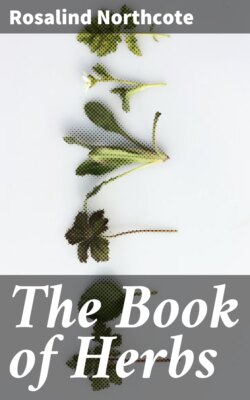Читать книгу The Book of Herbs - Rosalind Northcote - Страница 26
На сайте Литреса книга снята с продажи.
Horse-Radish (Cochlearia Armoracia).
ОглавлениеTable of Contents
Dr. Fernie translates its botanical name, Cochlearia, from the shape of the leaves, which resemble, he says, an old-fashioned spoon; ar, near; mor, the sea, from its favourite locality. “For the most part it is planted in gardens … yet have I found it wilde in Sundrie places … in the field next unto a farme house leading to King’s land, where my very good friend Master Bredwell, practitioner in Phisick, a learned and diligent searcher of Samples, and Master William Martin, one of the fellowship of Barbers and Chirugians, my deere and loving friend, in company with him found it and gave me knowledge of the plant, where it flourisheth to this day. … Divers think that this Horse-Radish is an enemie to Vines, and that the hatred between them is so greate, that if the roots hereof be planted neare to the Vine, it bendeth backward from it, as not willing to have fellowship with it. … Old writers ascribe this enmitie to the vine and Brassica, our Colewortes.” Both he and Parkinson think, that in transferring the “enmitie” from the cabbage to the horse-radish, the “Ancients” have been mistranslated. The Dutch called it Merretich; the French, Grand Raifort; the English, locally, Red Cole. Evelyn calls it an “excellent, universal Condiment,” and says that first steeped in water, then grated and tempered with vinegar, in which a little sugar has been dissolved, it supplies “Mustard to the Sallet, and serving likewise for any Dish besides.”
